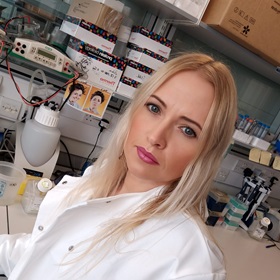A new study has shown that non-cancerous cells positioned close to tumours can affect how cancer responds to treatment. Factoring in the effects of these cells could improve drug development, which typically focuses on cancer cells alone. It could also provide new insights into the most effective use of existing cancer medications.
The non-cancerous cells in question form the structural components, known collectively as the stroma, that hold the tumour tissues together and represent part of the tumour microenvironment (TME) – the complex ecosystem that surrounds the tumour. They secrete a multitude of different proteins called the secretome into the extracellular space. These proteins can activate or suppress signalling pathways between cells, potentially influencing drug response.
This study is the first to compare the function of the often-studied cancer cell secretome with that of the proteins secreted by stromal cells in the TME.
The research was led by scientists at The Institute of Cancer Research, London, and published in the Journal of Proteome Research. A National Institute of Health and Care Research (NIHR) grant funded much of the work, with additional financial support provided by the Cancer Research UK Centre, the Experimental Cancer Medicine Centres network, and the NIHR’s Biomedical Research Centre at The Institute of Cancer Research (ICR) and The Royal Marsden NHS Foundation Trust.
Traditional cancer drug screens might not provide the full picture
In cancer research, drug screens expose cancer cells to various compounds and assess the extent of each compound’s effect on the health of the cells. Compounds that reduce the growth of cancer cells are considered to have anti-cancer activity.
However, this process does not take into account the possible effects of the proteins secreted by the cells in the tumour stroma. These non-cancerous cells, which form part of the tumour, secrete a variety of proteins and other biologically active molecules that may promote the growth of the cancer or cause resistance to anti-cancer drugs.
In this study, the researchers decided to focus on cancer-associated fibroblasts (CAFs), which are one of the most abundant types of stromal cell. Fibroblasts secrete collagen proteins to help form connective tissue, which is key to maintaining the structural integrity of tissues in the body. CAFs are fibroblasts that are present in the TME, and they have diverse functions, including the growth of the tumour and drug resistance.
For the purpose of comparison, the team chose to use cell samples from a group of cancers driven by mutations in the KRAS gene, which helps regulate cell division. These cancers represent an area of unmet need due to their association with poor outcomes.
In the first part of the study, the researchers characterised and compared the proteins secreted by CAFs and KRAS mutant cells. In the second part, they exposed both secretomes to 97 anti-cancer drugs so that they could assess the effects of the proteins secreted by CAFs.
All the raw data from the study has been made publicly available on the PRoteomics IDEntifications Database (PRIDE) so that it can be mined by cancer researchers anywhere around the world.
The CAF secretome produces specific effects on different types of cancer cells
The researchers applied a technique called mass spectrometry to the identification of proteins across their samples, finding a total of 5,379. They then used different software and databases to narrow these down to the 2,573 proteins believed to be secreted by the cells. They found that the quantity of 123 of these proteins differed significantly between the two secretomes, with 108 being more than twice as abundant in the CAF secretome.
Although some of these 108 proteins are known to be associated with CAF functions, others are relatively understudied. The study authors highlight one, called WNT5B, which they believe warrants further investigation because its similarity to a protein known to promote drug resistance suggests that it might do the same. If a full exploration of WNT5B’s function in CAFs were to confirm this, the protein could serve as a drug target in the future.
The drug screen revealed that proteins secreted by CAFs seem to increase resistance to two types of chemotherapy: methotrexate and mercaptopurine (6-MP). At the same time, they increase sensitivity to a treatment called erdafitinib, which is used to treat urothelial cancers.
Interestingly, the difference in response between the CAF and cancer cell secretomes varied among the nine KRAS mutant cancer cell lines that the team used in the study. This means that CAFs do not produce a single, consistent response to a particular drug, highlighting the complexity of treating these cancers.
“An area of biology that is slowly becoming more mainstream”
First author Rachel Lau, who was a PhD student at the ICR at the time of the study and is now a postdoctoral bioinformatician at Queen Mary University of London, said:
“This study allowed us to directly compare the secretomes of CAFs and cancer cell lines in a multiplexed manner for the first time. Even though the stroma forms a significant portion of the tumour mass, most drug screens overlook stromal cells and focus on cancer cells alone. Our work has shown that the CAF secretome has the potential to influence the function of cancer cells, highlighting the importance of considering stromal elements as part of cancer drug development.
“On the back of this, we are pleased to be able to share our data with the wider research community. We believe this will accelerate the full characterisation of the CAF secretome, which we hope will help towards overcoming drug resistance in cancer.”
Senior author Professor Udai Banerji, who is Co-Director of the Drug Development Unit at the ICR and The Royal Marsden and a member of the Cancer Research UK Convergence Science Centre, said:
“The role of non-cancerous cells in the development and progression of cancer is an area of biology that is slowly becoming more mainstream. Researchers have already put a lot of effort in to characterise these cells by studying their gene expression or structure under a microscope, but in this paper, we have focused on assessing the secreted factors and not the cells themselves.
“Drug resistance continues to be a major barrier to treatment success, and it is hindering our ability to defeat cancer. This study revealed that, in some instances, the CAF secretome caused drug resistance. We need to perform further studies to understand the mechanism of action behind CAF-mediated resistance in certain types of cancer cells so that we can use this information to inform the development of more effective cancer medications.

 .
.